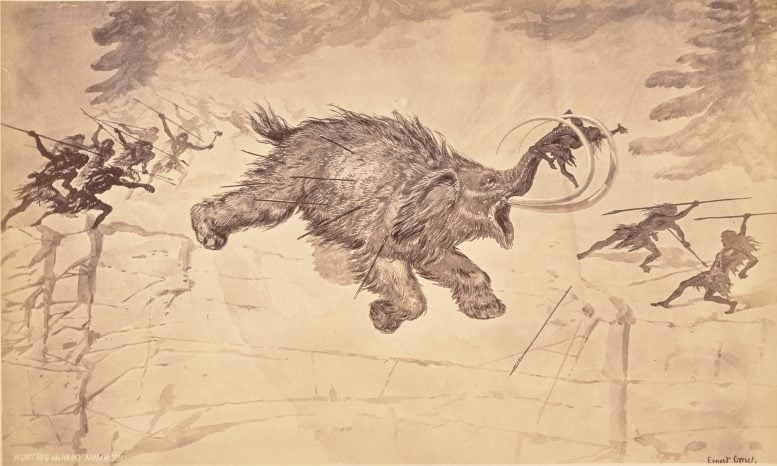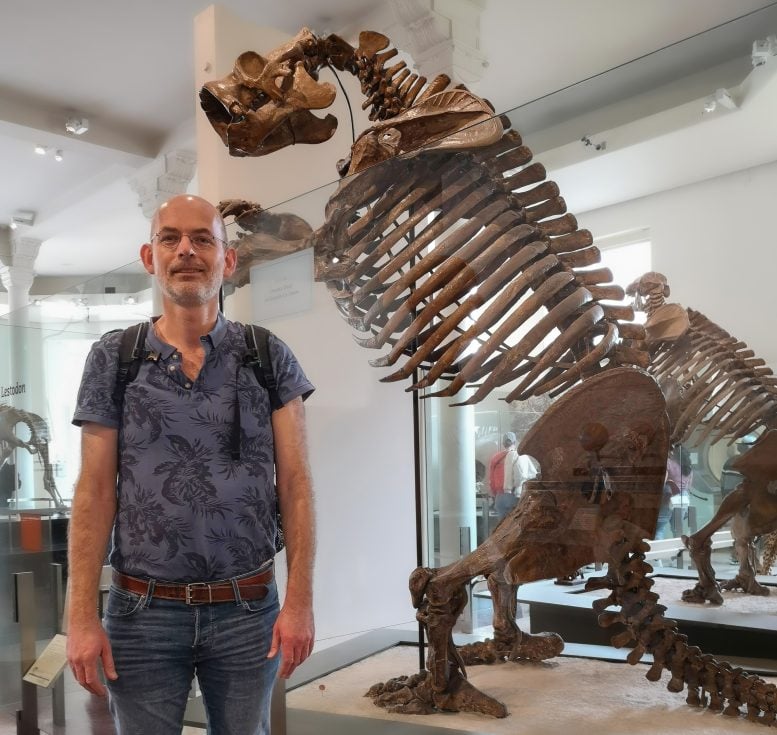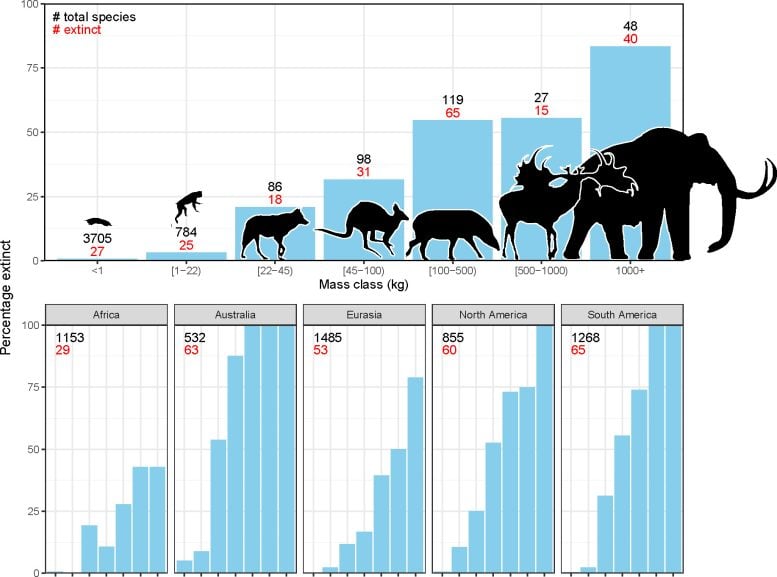
Researchers at Aarhus University have concluded that human hunting, rather than climate change, was the primary factor in the extinction of large mammals over the past 50,000 years. This finding is based on a review of over 300 scientific articles.
Over the last 50,000 years, many large species, or megafauna, weighing at least 45 kilograms have gone extinct. Research from Aarhus University suggests that these extinctions were predominantly caused by human hunting rather than climate change, despite significant climate fluctuations during this period. This conclusion is supported by comprehensive reviews incorporating evidence of human hunting, archaeological data, and studies across various scientific fields, demonstrating that human activity was a more decisive factor in these extinctions than previously dramatic climate changes.
The debate has raged for decades: Was it humans or climate change that led to the extinction of many species of large mammals, birds, and reptiles that have disappeared from Earth over the past 50,000 years?
By “large,” we mean animals that weighed at least 45 kilograms – known as megafauna. At least 161 species of mammals were driven to extinction during this period. This number is based on the remains found so far.
The largest of them were hit the hardest – land-dwelling herbivores weighing over a ton, the megaherbivores. Fifty thousand years ago, there were 57 species of megaherbivores. Today, only 11 remain. These remaining 11 species have also seen drastic declines in their populations, but not to the point of complete extinction.
A research group from the Danish National Research Foundation’s Center for Ecological Dynamics in a Novel Biosphere (ECONOVO) at Aarhus University now concludes that many of these vanished species were hunted to extinction by humans.

Many different fields of research
They present this conclusion in a review article invited by and published in the scientific journal Cambridge Prisms: Extinction. A review article synthesizes and analyses existing research within a particular field.
In this case, the researchers from Aarhus University incorporated several research fields, including studies directly related to the extinction of large animals, such as:
- The timing of species extinctions
- The animals’ dietary preferences
- Climate and habitat requirements
- Genetic estimates of past population sizes
- Evidence of human hunting
Additionally, they included a wide range of studies from other fields necessary to understand the phenomenon, such as:
- Climate history over the past 1-3 million years
- Vegetation history over the past 1-3 million years
- Evolution and dynamics of fauna over the past 66 million years
- Archaeological data on human expansion and lifestyle, including dietary preferences
Climate change played a lesser role
The dramatic climate changes during the last interglacial and glacial periods (known as the late Pleistocene, from 130,000 to 11,000 years ago) certainly affected populations and distributions of both large and small animals and plants worldwide. However, significant extinctions were observed only among the large animals, particularly the largest ones.
An important observation is that the previous, equally dramatic ice ages and interglacials over the past couple of million years did not cause a selective loss of megafauna. Especially at the beginning of the glacial periods, the new cold and dry conditions caused large-scale extinctions in some regions, such as trees in Europe. However, there were no selective extinctions of large animals.

“The large and very selective loss of megafauna over the last 50,000 years is unique over the past 66 million years. Previous periods of climate change did not lead to large, selective extinctions, which argues against a major role for climate in the megafauna extinctions,” says Professor Jens-Christian Svenning. He leads ECONOVO and is the lead author of the article. He adds, “Another significant pattern that argues against a role for climate is that the recent megafauna extinctions hit just as hard in climatically stable areas as in unstable areas.”
Effective hunters and vulnerable giants
Archaeologists have found traps designed for very large animals, and isotope analyses of ancient human bones and protein residues from spear points show that they hunted and ate the largest mammals.
Jens-Christian Svenning adds, “Early modern humans were effective hunters of even the largest animal species and clearly had the ability to reduce the populations of large animals. These large animals were and are particularly vulnerable to overexploitation because they have long gestation periods, produce very few offspring at a time, and take many years to reach sexual maturity.”
The analysis shows that human hunting of large animals such as mammoths, mastodons, and giant sloths was widespread and consistent across the world.
It also shows that the species went extinct at very different times and at different rates around the world. In some local areas, it happened quite quickly, while in other places it took over 10,000 years. But everywhere, it occurred after modern humans arrived, or in Africa’s case, after cultural advancements among humans.
…in all types of environments
Species went extinct on all continents except Antarctica and in all types of ecosystems, from tropical forests and savannas to Mediterranean and temperate forests and steppes to arctic ecosystems.
“Many of the extinct species could thrive in various types of environments. Therefore, their extinction cannot be explained by climate changes causing the disappearance of a specific ecosystem type, such as the mammoth steppe – which also housed only a few megafauna species,” explains Jens-Christian Svenning. “Most of the species existed under temperate to tropical conditions and should actually have benefited from the warming at the end of the last ice age.”
Consequences and recommendations
The researchers point out that the loss of megafauna has had profound ecological consequences. Large animals play a central role in ecosystems by influencing vegetation structure (e.g., the balance between dense forests and open areas), seed dispersal, and nutrient cycling. Their disappearance has resulted in significant changes in ecosystem structures and functions.
“Our results highlight the need for active conservation and restoration efforts. By reintroducing large mammals, we can help restore ecological balances and support biodiversity, which evolved in ecosystems rich in megafauna,” says Jens-Christian Svenning.
Reference: “The late-Quaternary megafauna extinctions: Patterns, causes, ecological consequences and implications for ecosystem management in the Anthropocene” by Jens-Christian Svenning, Rhys T. Lemoine, Juraj Bergman, Robert Buitenwerf, Elizabeth Le Roux, Erick Lundgren, Ninad Mungi and Rasmus Ø. Pedersen, 22 March 2024, Cambridge Prisms: Extinction.
DOI: 10.1017/ext.2024.4
The study was funded by the Villum Fonden, the Danish National Research Foundation, and the Independent Research Fund Denmark.
5 Comments
And with modern weapons humans have driven to extinction (or near extinction) wolves, California grizzly bear, bison, Tasmanian Tiger, etc., to name a few. Greed and ignorance endangers others, such as rhinos and elephants. In some ways humans are the worst thing that ever happened to life on this planet. Maybe that’s a harsh thing to say, but we as a species are pretty good at upsetting and destroying nature.
“However, significant extinctions were observed only among the large animals, particularly the largest ones.”
One important thing shared by megafauna is the requirement of large volumes of food. If climate change reduced the availability of essential or even preferred food, one would reasonably expect a reduction in fitness and survival.
I don’t think that this study is the last word on the subject.
The disappearence of megafauna occurred even when climate should not have been a factor. Yes, large animals need a lot of food, that’s true. They also reproduce more slowly and in smaller numbers. The one thing that seems consistent is that when humans arrived in a region, they prefered to hunt the larger animals, and did so aggressively. Over a given period of time the increasing human population kills off the fewer and fewer remaining animals, who can’t reproduce fast enough to replenish their numbers.
But but we’ve been told that native people all live in harmony with nature. Only European people over harvest and cause extinction. This is an excellent example of scientists talking out of both sides of their mouths.
And the Paleo-People were disease-free, happy, never wasted anything, and all their children were above average.